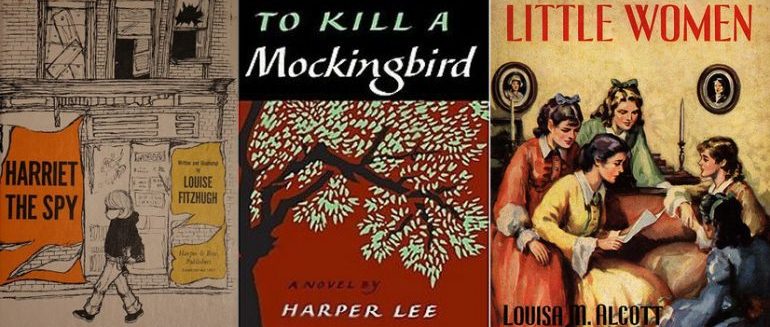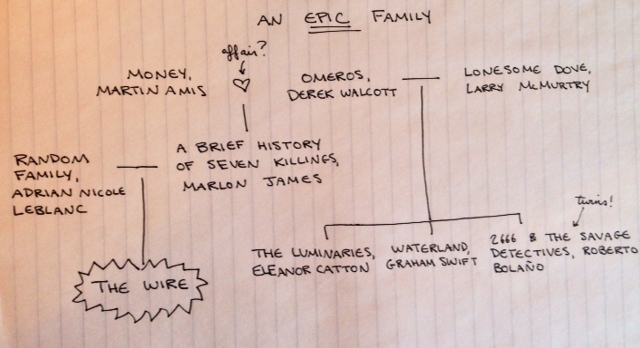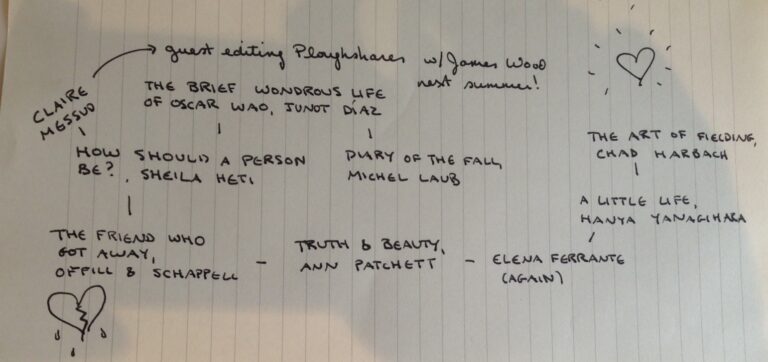Cool Girls Don’t Wear Dresses: Being One of the Boys in Classic Children’s Books

Seminal children’s books are littered with girls who are defiantly un-girly. Just a few of the many examples are Harriet the Spy, who wears a toolbelt stuffed with spy supplies; Pippi Longstocking, the rowdy orphan with the strength of Popeye; Jo Marsh, the Little Woman who’s referred to as “my dear fellow”; and Scout Finch, the constantly dirty and overall-wearing narrator of To Kill a Mockingbird.
A frequent complaint made by other characters is that these girls are insufficiently feminine. In Harriet the Spy, one incident revolves around Harriet’s and her friend Janie’s staunch opposition to dancing school, something of a rite of passage in the upper-class New York City world they inhabit. Janie’s uber-embarrassing mother tries to make a joke out of it: “I think you girls have something to learn. I think you have to find out you’re girls.”
Harriet knows better, however. Her impression of dancing school is of a place where “you have to wear party dresses and all the boys are too short and you feel like a hippopotamus.” This seems undignified for a spy and writer in training. She relents only after her nearly magical nanny, Ole Golly, insists that male spies are the ones who train by learning languages, guerrilla fighting, and football scores. Female spies, along the lines of Mata Hari, need to wear party dresses and learn to dance.
In To Kill a Mockingbird, Scout’s frequent antagonist is closer to home: her aunt. Scout explains, “Aunt Alexandra was fanatical on the subject of my attire. I could not possibly hope to be a lady if I wore breeches; when I said I could do nothing in a dress, she said I wasn’t supposed to be doing things that required pants.” This is an attitude shared by others in their small Alabama town. A neighbor tells Scout disapprovingly, “you won’t get very far until you start wearing dresses more often.”
One of the things that makes these protagonists suspect, from the standpoint of gender conventions, is their affinity for male friends. Harriet has classmate Sport, Jo has neighbor Laurie, Scout has playmate Dill, and Pippi has various animal friends. Scout, for one, prefers the company of men. In her words, “Ladies seemed to live in faint horror of men, seemed unwilling to approve wholeheartedly of them. But I liked them. There was something about them, no matter how much they cussed and drank and gambled and chewed.”
In addition to enjoying the platonic company of males, these girls are loud, brash, uninterested in fashion, outdoorsy, and far from decorous. They run rather than walk, and feel plain or don’t particularly care about their appearance. This marks them out as unusual, across their different countries, time periods, and social (though not racial) backgrounds.
Of course, there are plenty of counterexamples. The young female protagonists of The Secret Garden, The Wizard of Oz, Anne of Green Gables, or Little House on the Prairie aren’t particularly non-conforming, in terms of gender expectations.
But nor are these girls cool. They’re compelling, yes, and they have interesting, well-told stories. But they don’t inspire in the same ways. Juvenile coolness is so often linked to rebellion, and non-conformity to gender (and other) conventions is a key part of what makes the tomboy characters so magnetic.
Few people read Little Women and long to be flighty Amy or dependable Meg, as pretty as they are. Some might even argue that a character like Dorothy is marked more by the events that happen to her, rather than fundamental personality traits — unlike irrepressible Pippi, say, or hard-headed Harriet.
This isn’t to say that Jo et al.’s resistance to gender constraints is fully developed into a political stance. This is unsurprising given the girl’s youth. These examples show how tomboyishness in classic children’s fiction is used to engage with gender norms and delineate acceptable (and unacceptable) boundaries of feminine behavior. For instance, despite the more fluid sexuality of some of the authors behind such characters, romantic interest in boys is a sometimes reluctant but still inevitable trait of these characters. For these girls, boyishness is acceptable only within an overall framework of unambiguous heterosexuality.
For example, the life of Louisa May Alcott, the author of Little Women, shows a chafing against gender norms. Alcott was an early feminist who remained unmarried and identified with men. Her fictional counterpoint, Jo, ends up finding fulfillment as a wife to a substantially older man, and (in Little Men) the guardian of many children. And grown-up Scout, in the To Kill a Mockingbird prequel Go Set a Watchman, spends much of the novel fending off the over-attention of her boyfriend.
In enduring books like To Kill a Mockingbird, boyishness dictates the types of literary girls we want to be. Womanhood remains another story — one that’s more difficult to reconcile with the adolescent need for self-expression through unconventionality.


